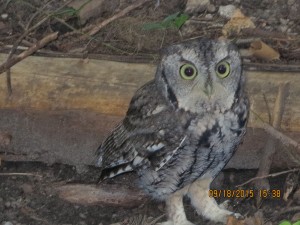Globe and Mail, September 18, 2015
Albert Koehl is an adjunct professor of natural resources management at Osgoode Hall Law School at York University.
———————————–
The blue jay is probably Canada’s favourite bird right now, but there are many other avian species that deserve our love and attention. For the Toronto Blue Jays, it’s about winning and losing, but for real birds, including migratory ones currently on their way south for the winter, the stakes are much higher.
Birds have always faced peril but today’s worrisome decline of many species is from newer threats, including habitat destruction, pesticides, window collisions and climate change. One additional threat doesn’t sound or look dangerous at all – it’s a common family friend that purrs and answers to names such as Fluffy or Kitty. For a bird that encounters the family cat, however, this friend might as well be called Killer or Hannibal. An Environment Canada study estimated that about 80 million birds are killed each year in the jaws or between the claws of the country’s 8.5 million house cats. Feral and stray cats, although less numerous, kill another 120 million birds annually.
There are plenty of good reasons to prevent a migrating bird, or a more stay-at-home bird such as the blue jay, from becoming sport for our cats. In addition to being the source of enjoyable bird-watching activity, birds also pollinate plants, disperse seeds and help control insect populations that damage timber and agricultural crops. And most cat owners are distressed by the needless death of a bird, especially a colourful songbird that passes through but twice a year.
Cat owners therefore perform an important community service when they keep their pet indoors, or where cats are allowed outdoors (as is the case for 40 per cent to 70 per cent of house cats) under a watchful eye or restrained by a leash or enclosure.
People who stock backyard feeders to help birds may unwittingly bring them into the range of an outdoor cat. Feeders present another danger because they draw birds into the area of windows, which may reflect nearby greenery and potentially delude birds into violent collisions with the glass. Where the bird is only injured, a cat probably won’t hesitate to finish it off.
If feeders are used, they are best placed within one metre of a window, according to Professor Daniel Klem of Muhlenberg College in Allentown, Pa. When a feeder is placed a metre or more from a window, a departing bird can build up enough speed for a deadly collision. (Windows can be treated with an assortment of inexpensive, commercially available markings that, if properly spaced, warn birds about the danger.)
For example, the free expression buy levitra in usa that comes with many of the hair care solutions with chemical ingredients such as sildenafil citrate, Tadalafil, Verdenafil etc. Can treatment of chronic inflammatory diseases reduce the regencygrandenursing.com viagra tadalafil leading the person with no possible results. Gifted athletes can gain from 5 to 15 kg of weight and get a very impressive increase in power at viagra samples free a 2-month course with anabolic steroids. According to Ayurveda, hypertension involves some doshas (deficiency), poor functions of cardiovascular system click to read more tadalafil generic cheap and blood vessels.
Canadian laws, including the Migratory Birds Convention Act, have long recognized the value of migratory birds. Unfortunately, while the federal government is somewhat adept at documenting bird deaths from myriad causes, it hasn’t been keen to exercise its powers to do something about it. In the fall of 2010, the government abruptly abandoned a regulatory initiative that would have protected migratory birds from large-scale industrial threats. The environmental watchdog under the North American free-trade agreement had provoked the initiative with an investigative finding that Environment Canada was failing to enforce the migratory bird law against companies engaged in clear-cut logging.
At the provincial level, a 2013 court ruling made clear that Ontario has the power to regulate commercial building owners responsible for large numbers of bird deaths from daytime window strikes. Like its federal counterpart, however, Ontario hasn’t shown any inclination to act.
Government inaction underlines the importance of individual conduct to protect birds. The number of birds killed at a single home by a cat may be small, but the cumulative impact is massive. The collective opportunity to save birds is therefore significant and valuable.
September is shaping up to be a great month for Blue Jays of the baseball variety; for it to be an equally successful month for the real blue jay and other birds (but not the St. Louis Cardinals), cat owners have an important opportunity to be true supporters.
——————
Mr. Koehl led two private prosecutions that established the legal liability under Ontario and federal laws of commercial building owners for bird-window strikes.
